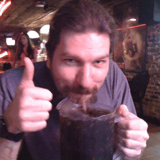Summary
Video can be so much more than just a presentation aid and a way to engage stakeholders; it can also be a means to explore, understand, and convey deep human truths. Through the lens of documentary filmmakers and visual ethnographers, film can be a powerful medium with which to capture context and emotion, and tell nuanced stories. In this fireside chat with three design researchers who have extensive experience working with video and documentary techniques, you will hear how they integrate documentary filmmaking approaches and methods into their research practices.
Key Insights
-
•
Documentary filmmaking involves active collaboration between filmmaker and subjects, not passive observation.
-
•
Visual anthropology backgrounds help design researchers see cultural context and material culture as core story elements.
-
•
Video serves as both a data capture tool and a medium for thinking about and analyzing research information.
-
•
Authenticity in video research requires balancing participants’ self-representation with researchers’ storytelling perspectives.
-
•
Structured video scripts asking participants for environment and personal response shots improve remote video ethnography.
-
•
Multi-tiered video deliverables—from highlight clips to full contextualized stories—better serve diverse stakeholder needs.
-
•
Good storytelling in research videos helps insights travel through organizations, fostering empathy and shared understanding.
-
•
Video can connect remote and distributed teams by enabling collaborative synthesis sessions with rich audiovisual material.
-
•
Interpreting video data collaboratively uncovers multiple perspectives and challenges team assumptions.
-
•
Tools like Reduct’s Video Board facilitate organizing, tagging, and collaborative manipulation of video clips in research workflows.
Notable Quotes
"Film is not just a way to capture information, it’s a way to think about information."
"The fly on the wall approach is a myth; interaction between filmmaker and people is what makes documentary film interesting."
"If ethnographic film is just observational, then it’s just a security camera and a bank, and I want no part of it."
"We answer questions differently when we’re living life and doing activities than when we’re sitting down facing the camera."
"People now carry incredibly powerful cameras everywhere, changing how stories are told and represented."
"Great stories travel through organizations freely when they connect to what really moves and motivates people."
"Different stakeholders interpret stories differently, and those conversations are valuable for deeper understanding."
"Autoethnography and video diaries enable participants to capture aspects of their lives that researchers might not see otherwise."
"Contextualizing sound bites or clips is crucial; otherwise, they risk losing meaning when separated from their original story."
"Collaboration with participants via video is possible even in constricted remote or hybrid work environments with the right methods."
Or choose a question:
















More Videos

"I believed we could do more — more for the company, customers, stakeholders, and ourselves if we had more agency."
Nalini KotamrajuResearch After UX
March 25, 2024

"Care less about being certain and more about being effective."
Dean BroadleyNot Black Enough to be White
January 8, 2024

"Silence is complicity. Inaction is support."
Denise Jacobs Nancy Douyon Renee Reid Lisa WelchmanInteractive Keynote: Social Change by Design
January 8, 2024

"People problems find their way to design ops because we’re known problem solvers and people run to us when morale is low."
Kim Fellman CohenMeasuring the Designer Experience
October 23, 2019

"Good design is honest and yes, the Jewel e-cigarette will honestly kill you."
George AyeThat Quiet Little Voice: When Design and Ethics Collide
November 16, 2022

"Getting exact endorsement from the top helps your cause immensely."
Nathan CurtisBeyond the Toolkit: Spreading a System Across People & Products
June 9, 2016

"We want to know agents better than they know themselves to drive tailored, contextually relevant solutions."
Greg PetroffThe Compass Mission
March 10, 2021

"We have this collective superpower navigating the breadth and depth of human experience across cultures."
Chloe Amos-EdkinsA Cultural Approach: Research in the Context of Glocalisation
March 27, 2023

"User journeys are the bedrock for deciding which data to collect and measure."
Mackenzie Cockram Sara Branco Cunha Ian FranklinIntegrating Qualitative and Quantitative Research from Discovery to Live
December 16, 2022


















